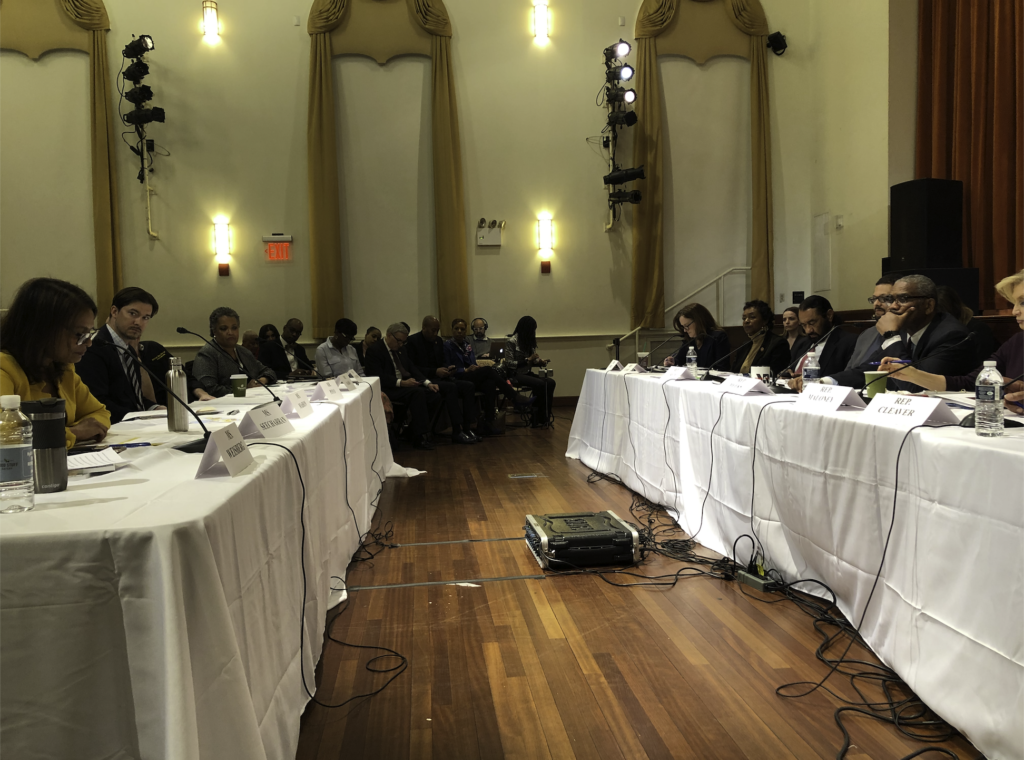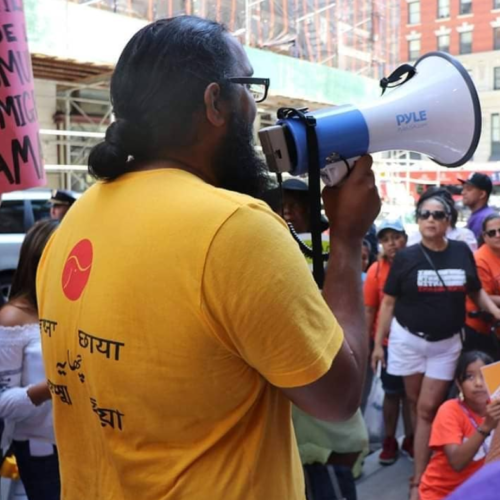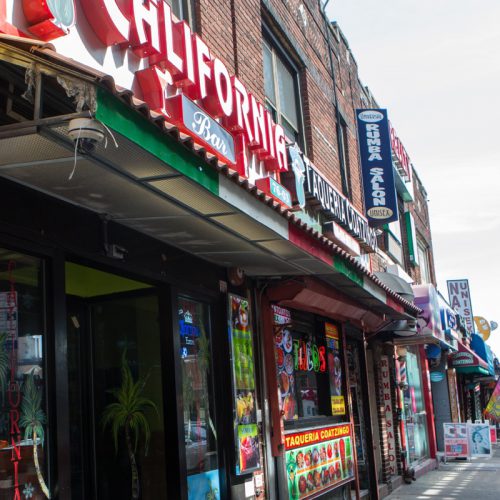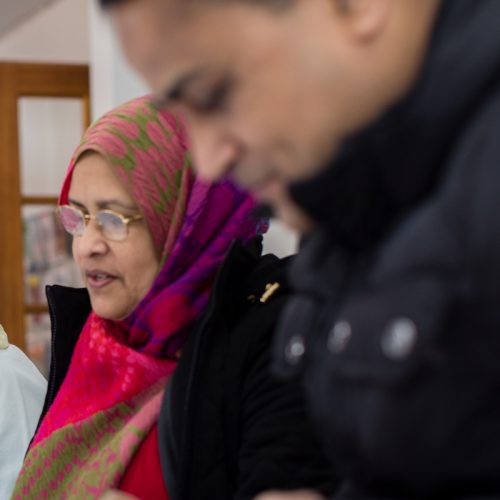
Support Chhaya CDC in building the power, housing stability, and economic well-being of South Asian and Indo-Caribbean communities in New York City. Donate Today!

On March 6th, 2020, Chhaya’s Annetta Seecharran was invited to testify before the Subcommittee on Consumer Protection and Financial Institutions, U.S. House Committee on Financial Services to share our perspective on how “modern-redlining” plays out in the lives of everyday New Yorkers. Chhaya’s frontline staff witness the extraordinary hurdles our community members experience in order to achieve basic functioning in our economy, which include banking, access to credit, and personal asset building.
Recommendations: Need for Stronger Protections
The experience of facing language barriers in the banking system is a common one. South Asians and other immigrants seldom find credit marketing or detailed documents in their native language. In 2015 Chhaya participated in a study with the Urban Justice Center, which found that 40% of Bangladeshi immigrants and 70% of Nepali and Tibetan immigrants struggled to access financial services because of language barriers. While there has been some improvement in language accessibility for Bangla and Chinese communities, other immigrant communities like Nepali, Tibetan, some Indian communities, Tamil and Telugu to list a few, still do not have access to bankers who speak or understand their language.
Many of our immigrant clients do not have a credit history. A lack of credit history is often used by financial institutions as a reason to turn prospective borrowers away. The daunting experience of trying to establish a first-line of credit makes many immigrants vulnerable targets for exploitative lenders.
At Chhaya, clients can establish a credit profile by participating in Chhaya’s peer lending circle program to build their consumer credit and ultimately work towards their financial goals. At Chhaya, we see how access to culturally-competent and affordable programs like Peer Lending Program allows credit invisible individuals to make a stepwise and safe journey into the formal banking system.
Chhaya has seen how limited access to credit not only affects consumers and homebuyers, but also applies to small businesses. South Asians, like so many immigrant groups, have high rates of self-employment. A lack of access to affordable financing often leads small business owners to search for loans through alternative means, many of which are predatory. The most tragic example of this is the trauma experienced by taxi drivers in New York, many of whom are South Asian, who took on predatory debt in order to finance the acquisition of a medallion, only to see their investment plunge underwater. The New York Times recently profiled a Bangladeshi-born taxi driver named Mohammed Hoque. Mr. Hoque was encouraged to take on a $1.7MM loan to purchase his medallion despite only earning $30,000 per year. Today, Mr. Hoque has had his medallion repossessed and expressed that he did not understand the terms of the loan. This is just another example of how language barriers and a lack of understanding of the US financial system make South Asian immigrants easy targets for unscrupulous lenders who do not feel the pressure of enforcement.
This reality applies to other businesses as well. Street vendors who lease a vending license on the secondary market as well as small businesses operating in traditional storefronts or subleasing a store front with other businesses. In the Jackson Heights Commercial District Needs Assessment, which Chhaya completed in collaboration with NYC Small Business Services and the Street Vendor Project, 17% of small businesses cited financing as their primary concern. Many small businesses owned by immigrants continue to depend on informal loans, family connections, and other means of financing the start-up of a business. Immigrant-run small businesses are integral parts of the economy, fueling economic growth, and creating employment opportunities. The lack of access to affordable financing to start and grow these businesses limits the economic well-being of entire communities.
For many immigrants and people of color, the neighborhoods that provide affordable rents, transit, and opportunities for community building, are the neighborhoods that have historically experienced lending discrimination. This includes neighborhoods like Jamaica, Richmond Hill, South Ozone Park, Corona, and Flushing that were labeled “Hazardous” or “Definitely Declining” by the Home Owners Loan Corporation in the 1930s. Other examples are areas that experienced significant “white flight”, and with it a decline in social and economic infrastructure, during the 1970s, such as Jackson Heights. It is no surprise then that the legacy of redlining and racial descrimination has a clear and profound impact on members of the communities we serve.
Perhaps there is no clearer example of this continued legacy of discriminatory lending than the predatory mortgage practices during the housing boom and crash of the 2000s. South Asian and other immigrant communities were targets of predatory lenders, a reality that demonstrates the continued lack of access to safe and affordable financial services for communities of color and immigrant New Yorkers. In 2009, Chhaya investigated foreclosure data and found an alarming number of South Asian New Yorkers experiencing foreclosure. In 2008, about 6,000 homeowners in Queens experienced foreclosure, with the most concentrated in south Queens. Through our analysis we found that 53% of foreclosure in Jamaica and Briarwood, 50% in South Ozone Park, and 46% in Jackson Heights were South Asian households. Many of these cases were the direct result of predatory lending practices perpetuated by non-bank lenders or irresponsible banks. Some of the issues we witnessed included excessive loan fees, unscrupulous balloon payments, and negative amortization that left homeowners with increasing balances and evaporating equity in their homes.
Today we continue to see some of the same practices that were prevalent over a decade ago. Predatory practices are most often conducted by small banks that are not regulated with the same scrutiny as larger banks or non-bank lenders. These lenders fill a niche market for financially-excluded borrowers. Borrowers often lack sufficient financial capability, including knowledge of the basics of personal finance in the United States, needed to access mainstream financial services, so predatory loans represent the most accessible financing available to immigrants—particularly those with poor or no credit history.
Homeownership is the primary way families build wealth and for immigrants it is often the first point of engagement with credit, making them vulnerable to unscrupulous lenders. In many cases, the terms and conditions of contracts are not translated into the buyer’s primary language and not explained in detail before they are asked to sign. Even when brokers, agents, and lenders speak the same language as the buyer, many times their goal is singular – to get the contract signed. They do not feel obligated or motivated to help their client understand the contents of a loan contract. In fact, Chhaya has recently encountered several lenders in Queens that provide loans without verifying income or credit. Just a decade ago, we saw how these very practices were responsible for many people losing their life savings and homes.
As financial institutions continue to encourage marketing and even applications to online platforms, South Asian and other immigrant communities are left behind. Not only are websites not translated into needed foreign languages, but immigrant communities often lack the digital literacy to navigate these systems. At Chhaya, we’ve seen numerous cases where homebuyers are asked by bank representatives to set up an online profile and sign important disclosures such as Loan Estimates, Loan Applications, and Commitments which explain the terms and conditions of the mortgage. This system sets up clients with low digital literacy and language skills to sign documents that they cannot read, understand, or easily access again.
Chhaya has seen housing discrimination play out in various other ways. While fair housing protections have given communities of color tools to fight back against racial discrimination by real estate agents, sellers, and lenders, there continues to be a gap in fair housing regulation—the approval from the boards of co-op apartments. For many low and moderate income New Yorkers, co-ops provide the most affordable opportunity for homeownership and wealth building. Chhaya is supportive of the co-op housing model in general. However, in New York co-op boards are still allowed to reject applicants without providing a reason for the rejection. This has led to some confusing and unsettling experiences for Chhaya clients. One client was rejected by a co-op board after having been asked about the type of ethnic food they cook, and what kind of odors neighbors could expect to emanate from the apartment. Other clients with sound credit, savings, strong job histories, and steady incomes have been inexplicably rejected by co-op boards that lack the racial and ethnic diversity of the neighborhood at large, leaving us to question if race or national origin had a role to play in their decision. Chhaya strongly believes that co-op boards should be required to make decisions and disclosures in line with fair housing protections.
Chhaya has recently observed another growing trend that is impacting opportunities for immigrant communities to build assets. Certain neighborhoods in Queens have traditionally provided affordable and accessible opportunities for moderate income families to buy a home and build assets. However, now we are seeing an alarming rise of investors in the small homes market who are outbidding and crowding out immigrant families, people of color, and other moderate income buyers. In Chhaya’s 2019 report entitled Investor Invasion: The Changing Landscape of Small Home Ownership in Queens, we found that investors have more than doubled their share of the available market for small homes.
In the neighborhood of Corona, we found that a decade ago, ten percent of one and two-family homes on the market were bought by investors. Today, that number has grown to 30 percent. In Richmond Hill, 25 percent of one and two-family homes on the market are bought by investors, compared to just two percent a decade ago. This observation mirrors a trend occurring across the country: investors, private equity firms, and other financial entities are buying small homes, that were once available for first-time homebuyers and families, as rental properties or for house-flipping purposes.
As a result of this trend, housing prices have climbed to prohibitive levels for community members. Even when clients can access loans, they are unable to compete with big real estate investors, many of whom are buying with all-cash offers or at loan-to-value ratios that exceed any reasonable limit. This practice is gutting our neighborhoods of families and replacing them with anonymous LLC landlords.
This is where we see a critical role for government oversight and regulations like the Community Reinvestment Act (“CRA”). We need to ensure that banks are not just lending in Low and Moderate Income (LMI) areas, but that LMI families are accessing these loans. Banks must be held accountable for lending to investors, particularly those that seek to flip homes and consequently destabilize communities.






Main Office:
37-43 77th St, 2nd Floor, Jackson Heights, NY 11372
Contact: 718.478.3848; info@chhayacdc.org
Press: press@chhayacdc.org
Richmond Hill Center:
121-18 Liberty Avenue, 2nd Floor, Richmond Hill, NY 11419
Contact: 718.374.3371; info@chhayacdc.org
Press: press@chhayacdc.org
Copyright 2022 by Chhaya Community Development Corporation. All rights reserved. Chhaya CDC is a 501(c)3 non-profit organization.